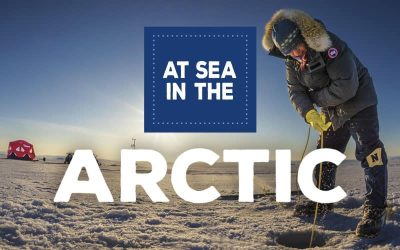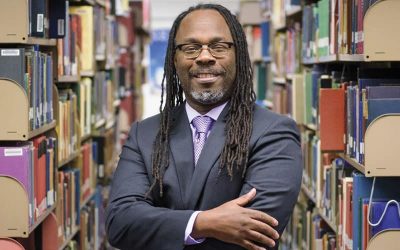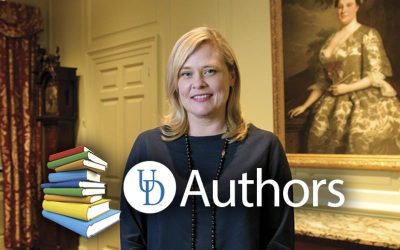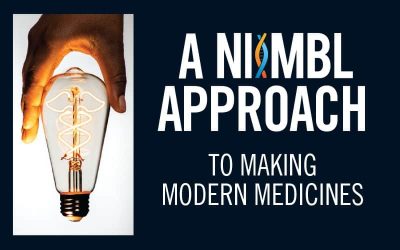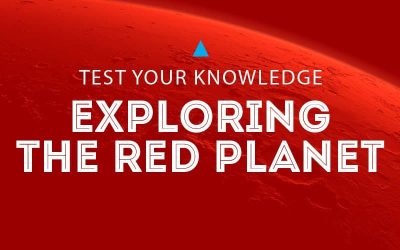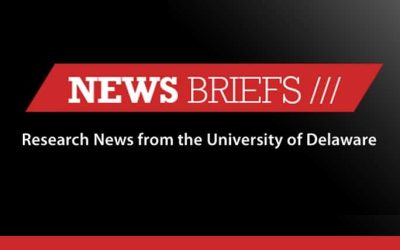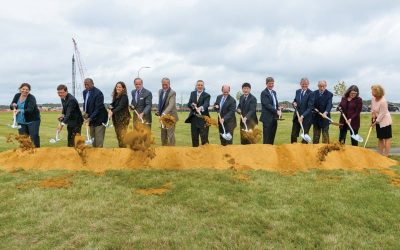

NSF EARLY CAREER AWARDEES
• Nayantara Bhatnagar
• Joe Feser
• Charles Hohensee
• Deb Jaisi
• Anderson Janotti
• Rodrigo Vargas
• Bingjun Xu
• Rui Zhang
Problems of physics
Nayantara Bhatnagar
Water turning into ice at its freezing point or the magnetization of iron are examples of phase transitions. Properties such as volume or heat capacity change at the transition point.
Phase transitions also arise in models such as attracting and repelling particles on a lattice. The energy of such systems can be mathematically modeled, but it is difficult because of the exponential numbers of possible configurations even for a small number of particles.
Nayantara Bhatnagar is developing tools and theories to understand the locations of phase transitions in such models and their nature—whether abrupt and discontinuous or smooth from one phase to another.
She also is creating new research opportunities for graduate and undergraduate students in probability and developing mentoring programs with the goal to retain women in mathematics.
Nayantara Bhatnaga
Joe Feser
Going with the flow
Joe Feser
Heat flows through many materials in random vibrations called phonons that transport energy in a wave-like manner.
“Phonons interact with any impurities they encounter, leading to energy scattering that impedes the flow of heat,” Joe Feser explains.
Feser wants to leverage new theoretical, computational and experimental techniques to understand how phonons interact with nanoparticles and then apply what he’s learned to engineer materials with better thermal properties.
His end goal is to bolster development of nanostructured electronic and optical materials with improved heat dissipation, as well as materials that convert heat to electricity and vice versa with unprecedented efficiency.
New avenues in math education
Charles Hohensee
“Backward transfer” refers to the process of new language learning interfering with (or sometimes enhancing) comprehension of a previously acquired language. But backward transfer also has been found to occur when students learn math.
As a middle-schooler begins to do quadratic equations in algebra, such as 3×2 + 6x = -10, that student may suddenly be at a loss doing previously learned linear equations, such as 4x = 20.
Charles Hohensee is exploring how negative influences of backward transfer can be minimized and the effectiveness of math instruction be increased. He will share findings at national conferences and in journals, as well as at a summer course for UD pre-service teachers and a local math teachers’ club.
Charles Hohensee
Deb Jaisi
Environmental forensics
Deb Jaisi
Much like forensic experts examine fingerprints to identify criminals, Deb Jaisi analyzes the isotopic fingerprints left by various sources of phosphorus—an essential nutrient that can overenrich and harm waterways at too high a concentration.
Jaisi is tracking the sources and fate of phytate, the most common organic phosphorus found in soils. It comes from both anthropogenic (animal feed wastes, manure) and natural sources (plants). He aims to determine the impact of each source on water quality.
In his education initiative, Jaisi will contribute to a new environmental forensics and society course at UD, enhance curricula at Delaware Technical Community College, and launch a 4-H camp on the topic.
Defects that matter
Anderson Janotti
Anderson Janotti develops computational models of defects in materials that are used for energy, electronics and optoelectronics applications. The ability to control the type and number of defects determines whether a given material will be suitable for various devices.
Not surprisingly, defects can be detrimental to performance, limiting the efficiency of solar cells, for example. However, defects also can be manipulated to boost desirable characteristics, which is Janotti’s focus.
By adding minute concentrations of impurities to a semiconductor such as silicon, a good insulator can be transformed into an excellent conductor, he explains. Such technology is widely used today in the microchips inside our computers, smartphones and tablets.
Anderson Janotti
Rodrigo Vargas
Unraveling mysteries in the marsh
Rodrigo Vargas
Salt marshes have the potential to store large amounts of carbon because they are highly productive and their organic matter decomposes slowly.
However, these ecosystems are under siege from sea level rise, land use change, nutrient runoff, ocean acidification and other disturbances. Changes in these processes could ultimately dictate the role salt marshes play. Will they be net sources or sinks (storers) of carbon?
Rodrigo Vargas is using many different sensors and techniques to understand the processes controlling carbon fluxes in marshes and their time scales. He’s also involving minority STEM undergraduate and graduate students in hands-on work in an outdoor laboratory he established at the St. Jones Reserve, a component of the Delaware National Estuarine Research Reserve (DNERR).
Go away, greenhouse gas
Bingjun Xu
Bingjun Xu wants to reduce levels of carbon dioxide, a major greenhouse gas, in a new way.
“Climate change has sparked a great deal of interest in harvesting the sun and wind to produce renewable electricity, but a major disadvantage is that these energy sources are intermittent,” he says.
Matching peak production to peak demand involves storing the harvested energy and delivering it when needed. An alternative is to use the energy as it’s produced.
Xu wants to use it to convert atmospheric CO2 into fuels and chemicals through an electrochemical process. He’ll be probing how electrodes and electrolytes interact at the molecular level to establish guiding principles for the process and for developing new devices.
Bingjun Xu
Rui Zhang
Shared-use superhighway
Rui Zhang
In 2012, President Obama’s technology advisers recommended that the federal government share its underused radio spectrum to help service providers meet consumer demand from the exponential growth in wireless data traffic.
To determine available spec-tra, the Federal Communications Commission advocated for the use of sensors to determine whether licensed users were actually sending signals at any given time or location.
While this proposal was economically sound, it brought with it a new set of problems revolving around fundamental issues of security and privacy that Zhang is now working to solve—from developing a robust map of available spectra, to techniques to detect misuse by unlicensed users.
MORE STORIES
2017 Research in Progress
What’s it like to do research in the Arctic? What ‘s it like to be on a ship for 4 to 6 weeks off Greenland? How do you work and sleep with 24 hours of daylight? Oceanographer Andreas Muenchow gives us a glimpse into his world.
At Sea in the Arctic
What’s it like to do research in the Arctic? What ‘s it like to be on a ship for 4 to 6 weeks off Greenland? How do you work and sleep with 24 hours of daylight? Oceanographer Andreas Muenchow gives us a glimpse into his world.
The Quiet Revolution
Trevor A. Dawes learned how libraries can change people’s lives when he was a college student. Now, he’s leading the charge to make the UD Library, Museums and Press an even greater force for good.
The hidden lives within a portrait
A 1746 portrait would launch a global journey into 18th-century life and present the past in a way never done before. The portrait was of Anne Shippen Willing, and what she wore would lead historian Zara Anishanslin on a journey to the far corners of the world—and launch a bold new way of looking at the past.
Filling a Real Demand for Simulated Care
Nursing instructor Amy Cowperthwait and her students are inventing products with a common goal: teaching compassionate patient care. Cowperthwait’s startup links students, engineers, business experts on quest to teach challenging medical procedures.
Suit Me Up for Mars
When astronauts make the “Journey to Mars,” NASA wants every protective measure available in place. The space agency contracted with ILC Dover to develop a new spacesuit, and ILC enlisted several materials experts at the University of Delaware to work on a suit that can handle whatever space might throw at them.
A NIIMBL Approach To Making Modern Medicines
Biopharmaceuticals have emerged recently and are having a revolutionary impact on vexing diseases such as cancer. The National Institute for Innovation in Manufacturing Biopharmaceuticals (NIIMBL), headquartered at the University of Delaware, is at the forefront of making medicines more accessible to Americans.
Exploring the Red Planet
NASA wants to put humans on Mars by the early 2030s. University of Delaware researchers are helping to develop spacesuits for that mammoth expedition. Yet Mars is shrouded in mystery for many of us. So what do you know about Mars? Let’s test your knowledge.
1969 – The Morning News: Man Steps onto Moon
Astronaut Neil A. Armstrong took the first moon step at 10:56 p.m., Delaware time, just six hours and 39 minutes after he and Edwin E. Aldrin Jr. fulfilled the age-old dream of landing on the moon. This was a major milestone in the new era of space exploration. We invite you to explore this interactive experience and relive the excitement of the first moon landing.
News Briefs
Learn how UD researchers are sharpening that competitive edge, fighting brain cancer, giving credit where credit is due, partners in disaster research and UD-NUVVE collaboration
Partnerships in progress
Multiple partnerships took wing in the past year to ensure UD’s scholarly efforts have the broadest and most sustained impact. Learn about the collaborations that ensure a UD world-class educational experience while serving as a major force for economic development.



